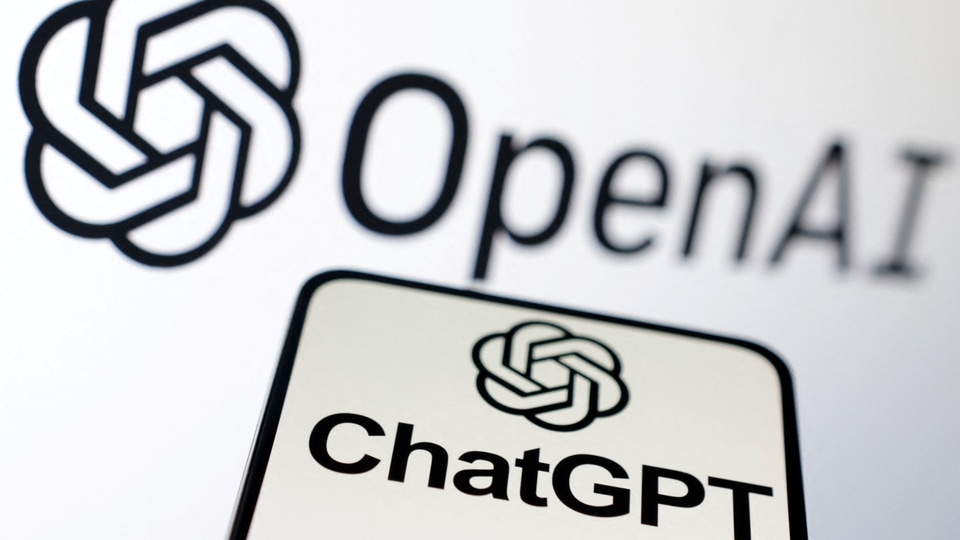ChatGPT is confronting, but humans have always adapted to new technology
ChatGPT is confronting, but humans have always adapted to new technology







 View all Images
View all ImagesAdapting to technological advances is a defining part of 21st-century life. But it's not unique to us: it's been part of the human story since our earliest written records – even featuring in the plotlines of ancient myths and legends.
While ChatGPT threatens to change writing (and writing-related work) as we know it, the Mesopotamians, who lived 4,000 years ago (in a geographical area centred in modern-day Iraq), went through this kind of seismic change before us. Their civilisation is credited with the invention of writing.
Living in changing times
Just two months after launching in November 2022, OpenAI's ChatGPT has already reached an audience of over 100 million people.
The large language model (LLM), sometimes called “autocomplete on steroids”, has drawn attention for its capacity to create human-like answers to queries. Its work has received passing grades on university law and business exams, and been used in a Colombian court to help decide a legal ruling.
Responses to ChatGPT and its competitors have vacillated between recognising the potential risks of the chatbot and extolling its possible benefits. We're flooded with theories on how new advances in AI may change how we work, study and live.
Ancient Mesopotamia was home to many of civilisation's early developments. Its people were world leaders in adapting to technological and cultural change.
Mesopotamians invented the wheel and agriculture, and pioneered advances in mathematics, urbanisation and transportation. These breakthroughs are reflected in cuneiform literature, one of the oldest known forms of writing.
The history of cuneiform writing is complex, but it seems to have initially developed to record economic data, such as debts that were owed. Over time, however, the Mesopotamians widened their use of signs inscribed into clay tablets to record a variety of information, in numerous languages. New uses covered everything from diplomatic correspondences to omen texts, to some of the world's oldest literary masterpieces.
Tech-assisted heroes
In the world's earliest known written epic, Gilgamesh, the eponymous hero is shown inventing and using technologies, such as diving weights and a sail, to further his journey to the edges of the world – and beyond.
As noted by Assyriologist Andrew George, the young hero develops new technologies to help his quest for fame and immortality. These advances allow him to engage in previously unknown activities, such as sailing and deep-sea diving.
Another royal hero from Mesopotamia, Lugalbanda (sometimes known for his super speed) is also credited with technological advancement. Lugalbanda improves the technique of fire-starting by using flint to spark embers and bake bread. The heroes' use of new tools emphasises their exceptionalism.
Inventions and ambiguity
Mesopotamian epics don't present cultural and technological advances as unambiguously and uniformly beneficial. In Gilgamesh, the benefits of civilisation and urbanisation, such as advances in wall-building technology, are juxtaposed with their costs – such as environmental destruction and alienation from the wild.
Indeed, the epics often represent new technologies being harnessed in the service of human conflict – and disproportionately serving the interests of those with high social status. In the Sumerian epic Enmerkar and the Lord of Aratta, the heroic king defeats his enemy by inventing and using superior technology: the ability to write on clay tablets.
This invention is also thought to be referenced in the Epic of Sargon, where Sargon appears to dodge a murder attempt through his epic reading skills. The text notes that while writing on tablets had been developed at that stage, the use of envelopes to hide their contents had not (perhaps luckily for Sargon).
In some ways, the representation of new technologies in cuneiform literature echoes contemporary concerns about AI: fears of increasing social inequalities and its potential use in cyberwarfare.
The future of history
Studying the past can deepen our understanding of how humans have adapted to modern technology over thousands of years. Conversely, modern technology continues to broaden our understanding of history.
In recent years, AI – the newest form of writing – has been used to decipher the oldest: cuneiform literature. The Fragmentarium project, for example, uses sophisticated algorithms to determine which fragments of shattered cuneiform texts belong together; these algorithms predict the text that once filled the missing sections.
AI will likely continue to alter the way historians analyse the past. This will require new considerations around familiar issues – such as how to represent the past accurately in light of possibly biased evidence, and the need to critically evaluate sources of information.
In the broader field of academia, the boundaries of how AI may be used have not yet been clearly explained. In January, for example, a top international AI conference banned the use of AI tools for writing scientific papers – though its use in editing papers was accepted.
Considering the limits of technology
Even those early tech adapters, the Mesopotamians, ran into problems the technology of the day could not address.
Climate change is thought to have resulted in the downfall of the Akkadian Empire, sometimes called the world's first multi-national political entity. And even the crafty Gilgamesh couldn't escape his own mortality.
Humans have been grappling with how to invent, use and adapt to technology since our earliest civilisations. In Mesopotamian epic literature, new technology helps heroic individuals travel beyond accepted limitations and develop new skills. But the technology and resulting knowledge are not always evenly distributed.
Knowing how we adapted to changing technology in the past helps us more fully understand the human condition – and may even help us prepare for the future. (The Conversation)
Melbourne, Feb 13 (The Conversation) For Valentine's Day, some couples only roll their eyes at each other in mutual cynicism. The capitalisation of love in the modern world can certainly seem banal.
But Valentine's Day gifts are hardly a contemporary invention. People have been celebrating the day and gifting love tokens for hundreds of years.
We should first turn to Geoffrey Chaucer, the 14th-century poet, civil servant and keen European traveller. Chaucer's poem from the 1380s, The Parliament of Fowls, is held to be the first reference to February 14 as a day about love.
This day was already a feast day of several mysterious early Roman martyred Saint Valentines, but Chaucer described it as a day for people to choose their lovers. He knew that was easier said than done.
The narrator of the poem is unsuccessful in love, despairing that life is short compared with how long it takes to learn to love well. He falls asleep and dreams of a garden in which all the different birds of the world have gathered.
Nature explains to the assembled flocks that, like every year on St Valentine's Day, they have come to pick their partners in accordance with her rules. But this process causes confusion and debate: the birds can't agree what it means to follow her rules because they all value different things in their partners.
Legal and emotional significance
Like today, in Chaucer's time gift-giving could be highly ritualised and symbolise intention and commitment. In Old and Middle English, a “wed” was any sort of token pledged to guarantee a promise. It was not until the 13th century that a “wedding” came to mean a nuptial ceremony.
The same period saw marriage transform into a Christianised and unbreakable commitment (a sacrament of the Church). New conventions of love developed in songs, stories and other types of art.
These conventions influenced broader cultural ideas of emotion: love letters were written, grand acts of service were celebrated, and tokens of love were given.
Rings, brooches, girdles (belts), gloves, gauntlets (sleeves), kerchiefs or other personalised textiles, combs, mirrors, purses, boxes, vessels and pictures – and even fish – are just some examples of romantic gifts recorded from the late middle ages.
In stories, gifts could be imbued with magical powers. In the 13th century, in a history of the world, Rudolf von Ems recorded how Moses, when obliged to return home and leave his first wife Tharbis, an Ethiopian princess, had two rings made.
The one he gave her would cause Tharbis to forget him. He always wore its pair which kept her memory forever fresh in his mind.
Outside of stories, gifts could have legal significance: wedding rings, important from the 13th century, could prove that a marriage had occurred by evidencing the intention and consent of the giver and recipient.
The art of loving
Like Chaucer, 20th-century German psychologist Erich Fromm thought people could learn the art of loving. Fromm thought love was an act of giving not just material things, but one's joy, interest, understanding, knowledge, humour and sadness.
While these gifts might take some time and practice, there are more straightforward ideas from history. Manufactured cards have dominated since the industrial revolution, taking their place alongside other now traditional presents such as flowers, jewellery, intimate apparel and consumables (now more often chocolates than fish). All can be personalised for that intimate touch.
There have, of course, been weirder examples of love gifts, such as Angelina Jolie and Billy Bob Thornton exchanging necklaces with silver pendants smeared with each other's blood.
Artist Dora Maar was so upset when her notoriously bad lover Pablo Picasso complained about having to trade a painting for a ruby ring she immediately threw the ring in the Seine. Picasso soon replaced it with another, this one featuring Maar's portrait.
A good love token can long outlast the feelings that prompt its giving: a flower pressed in a book, a trinket at the bottom of a box, a fading heartfelt card or a bittersweet song that jolts you back to an earlier time. In this way, the meaning of gifts can change as they become reminders that all things pass.
Catch all the Latest Tech News, Mobile News, Laptop News, Gaming news, Wearables News , How To News, also keep up with us on Whatsapp channel,Twitter, Facebook, Google News, and Instagram. For our latest videos, subscribe to our YouTube channel.


























